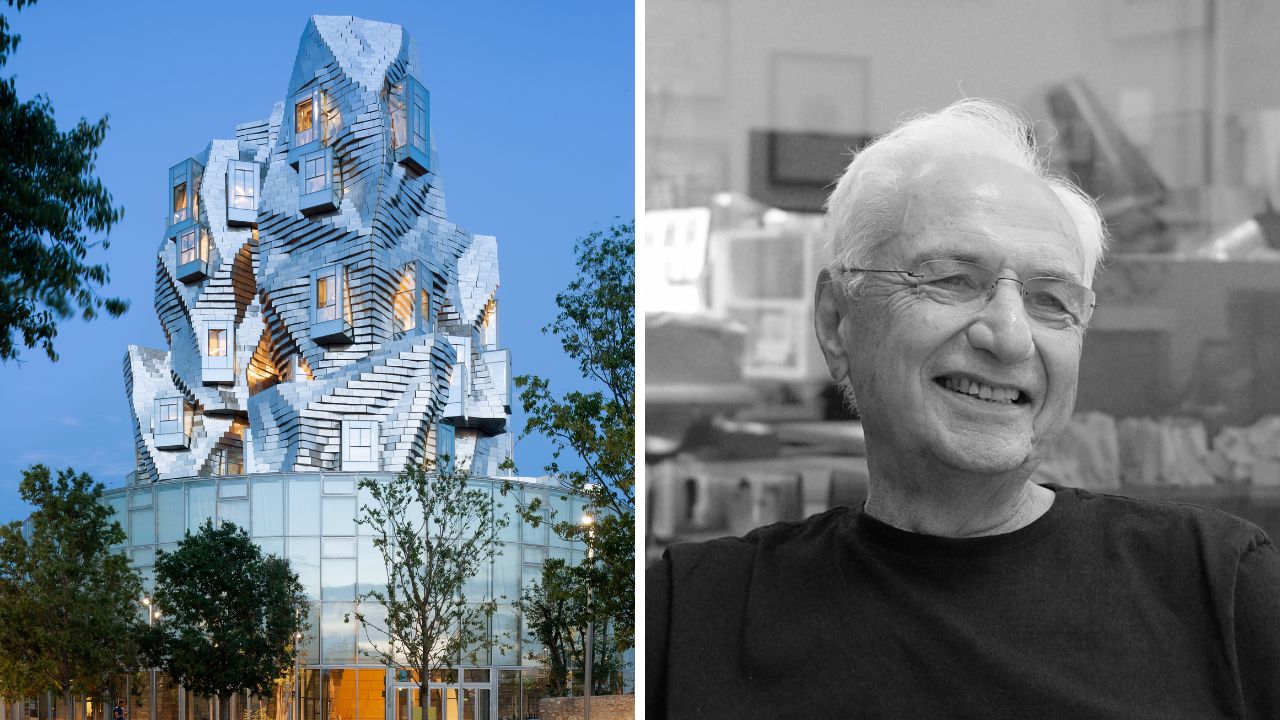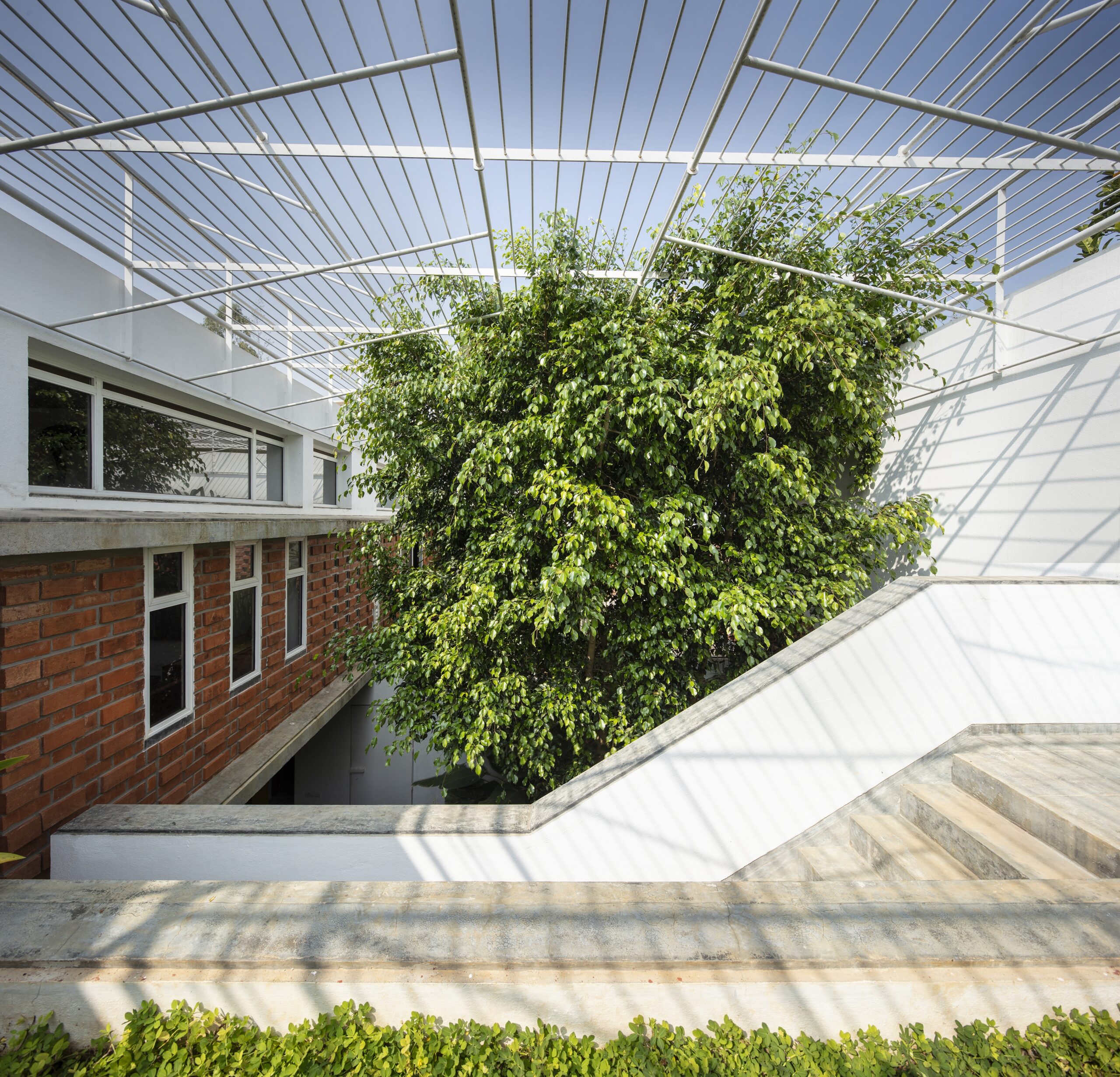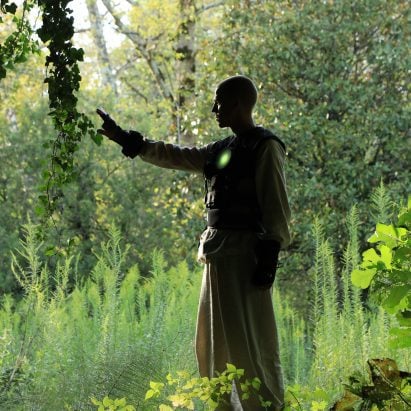Flood-responsive leisure centre among projects from The Bartlett School of Architecture


Dezeen School Shows: a leisure centre designed to adapt to flooding risks from the River Brent is among architecture projects from The Bartlett School of Architecture.
Also featured is a derelict Victorian bathhouse transformed into a community space and a proposal to redesign heating systems for Victorian houses.
The Bartlett School of Architecture
Institution: UCL
School: The Bartlett School of Architecture
Courses: Architecture BSc (ARB/RIBA Part 1), Architectural and Interdisciplinary Studies BSc, Engineering and Architectural Design MEng (ARB/RIBA Part 1, CIBSE and JBM), Architecture MSci (ARB Part 1 and 2) and Architecture MArch (ARB/RIBA Part 2)
Tutors: Farlie Reynolds, Chee-Kit Lai, Hannah Corlett, Sophie Reed, Luke Olsen, Murray Fraser, Alicia González-Lafita, Sara Martínez Zamora, Matthew Butcher and Kostas Grigoriadis
School statement:
"The Bartlett School of Architecture has been recognised as one of the world's leading institutions for architectural education.
"Renowned for its innovative and forward-thinking approach, The Bartlett consistently sets high standards in the field. Each year, its highly anticipated Summer Show presents the remarkable talent and diverse perspectives of its students to a global audience – both online and in person.
"The breadth of projects and the depth of thematic exploration invite viewers to reflect on what architecture is – and what it has the potential to become."

Systems for the Handling of Aquatic Deaths by Lucy Linton
"This project explores the disconnect between everyday waste and the ecological harm caused by our ignorance of it, using fish mortality from water contamination as a site of confrontation.
"Through a two-part system, ritual care at the river and a surreal memorial embedded in public toilets, it reimagines how we respond to non-human death.
"By merging post-mortem practice with infrastructure, the project invites users to confront the physical and ethical realities of the bodies impacted by their waste, proposing a speculative framework for mourning, respect and responsibility."
Student: Lucy Linton
Course: Architectural and Interdisciplinary Studies BSc
Tutors: Kevin Green and Freddy Tuppen
Email: lucy.linton.22[at]ucl.ac.uk

Regent's Park Coroner's Court by Jan Siwicki
"Regent's Park Coroner's Court quietly settles into the fabric between the Nash Terraces and Regent's Park Estate in Camden, London.
"It is not imposed but found, retrofitted into the old walls and stitched into the rhythm of existing housing.
"New brick and stone forms emerge where needed, with materials speaking plainly – brick is calming and enduring, while stone is a structure that carries meaning.
"The courtroom, mortuary, prayer spaces and offices serve both city and soul, allowing public life, long absent from this area of Camden, to return with quiet dignity.
"The court does not face the park in grandeur but rather acknowledges the estate."
Student: Jan Siwicki
Course: Architecture BSc (ARB/RIBA Part 1), UG12
Tutors: Hannah Corlett and Níall McLaughlin
Email: jan.siwicki.22[at]ucl.ac.uk

Augmented Grounds by Graeme Wong
"Set in Berlin's Mauerpark, Augmented Grounds proposes a new civic park and a 'centre for clean sport' within a doped landscape that performs year-round through environmental enhancement.
"Designed through a feedback loop with a responsive drawing machine, the project evolves seasonally, where terrain becomes infrastructure and climate becomes a tool for performance.
"Roof becomes hill and ceiling becomes a porous, operable surface that adapts to sun, wind and air.
"The project replaces automation with participatory climate systems, making environmental regulation visible and inviting users to actively shape the atmosphere of their space."
Student: Graeme Wong
Course: Architecture BSc (ARB/RIBA Part 1), UG21
Tutors: Abigail Ashton, Tom Holberton and Andrew Porter
Email: graeme.wong.22[at]ucl.ac.uk

The Fontanelle Crematorium: A Passage through Erosion by Tingyi (Tina) Xian
"Set along the Fontanelle Cave in Naples, this project proposes a funeral home and crematorium that adapts to the tuff rock face and is shaped by decay.
"Grounded in the idea that erosion offers opportunities for new inhabitation, the design employs match-casting to explore fit, allowing materials to conform to geological irregularities.
"By taking direct imprints from the rock's creases, the architecture grows parasitically from the terrain, forming a truly site-specific intervention.
"Stone and metal register and influence erosion, enabling the building to adapt, weather and reveal rituals of life and death through shifts in light, heat and texture."
Student: Tingyi (Tina) Xian
Course: Architecture BSc (ARB/RIBA Part 1), UG08
Tutors: Maria Fulford and Joerg Majer
Email: tina.xian.22[at]ucl.ac.uk

Eternity Burdens within New Grounds by Karina-Ioana Lăcraru
"Set within the shifting grounds of the Garzweiler coal mine in Germany, the project investigates how architecture can materialise in unstable site conditions and whether former inhabitants can reclaim it.
"Extraction is reframed as political agenda, reconfiguring the ground plane through territory-based landscaping, while power shifts from the mining company to local inhabitants through geosciences research and community-based broadcasting.
"The design methodology explores how architecture can establish a symbiotic relationship with its tools through mobile carving, inhabitable voids created by excavation and the spatial effects of shifting topographies."
Student: Karina-Ioana Lăcraru
Course: Architecture BSc (ARB/RIBA Part 1), UG13
Tutors: William Victor Camilleri and Laurence Blackwell-Thale
Email: karina.lacraru.22[at]ucl.ac.uk

Another's Yard by Peter Holmes
"Speculative developments, masterplans and architecture at large are all forms of chronotopic speculation betting on one specific future.
"Urgent issues like housing precarity, the cost of living and climate collapse require adaptable solutions that may (not) fit tomorrow's challenges.
"The revoked 2022 planning proposal for Murphy's Yard in Kentish Town exemplifies a once inevitable, now impossible future.
"This project questions the masterplan's illusion of control in large-scale design.
"Using the score to communicate architectural specificity and co-authorship, it proposes retaining the existing builder's yard alongside new homes and community spaces, acknowledging and integrating existing conditions we are willing to accommodate."
Student: Peter Holmes
Course: Architecture MArch (ARB/RIBA Part 2), PG17
Tutors: Tamsin Hanke and Yeoryia Manolopoulou
Email: peter.holmes.23[at]ucl.ac.uk

Text2Forest: Depositing Bodies of Data by Xavier Thanki
"Text2Forest is a computational design framework that reimagines forestry as an active, generative partner in architecture.
"It challenges conventional timber practice by treating trees as responsive agents shaped by ecological dynamics.
"Combining L-systems, machine learning and Large Language Model prompting, it generates site-specific tree morphologies from simple text inputs like weather data.
"By embedding growth rules into a custom linguistic syntax, Text2Forest translates ecological variables into complex branching structures and canopy forms.
"Producing thousands of unique, climate-responsive trees, it positions language as a tool for cultivating virtual forests, distributing authorship between designer, ecology and computation for a new timber architecture model."
Student: Xavier Thanki
Course: Architecture MArch (ARB/RIBA Part 2), PG21
Tutors: Abigail Ashton, Tom Holberton and Andrew Porter
Email: xavier.thanki.23[at]ucl.ac.uk

Headless Bodies: Producing through Desire by Evelyn Jesuraj
"This research explores the design-construction split through a metaphorical critique of cartesian theory.
"As architect and maker, I produce 'headless bodies', objects both personal and distanced, generated from and for the body (self and machine).
"These become tools to rethink freedom and care in architectural practice. Drawing on Deleuze and Guattari's concept of 'desiring-production', making becomes desire-led, resisting value systems that reduce creativity to measurable outputs.
"Ficto-critical narratives liberate the designer by proposing new value systems rooted in affect, autonomy and relational agency.
"The project asks how design might operate across subjective, fictional and ontological realities, transforming architecture through new relational frameworks."
Student: Evelyn Jesuraj
Course: Architecture MArch (ARB/RIBA Part 2), PG23
Tutors: Maria Fulford, Ben Spong and Farlie Reynolds
Email: evelyn.jesuraj.17[at]ucl.ac.uk

Lacuna at the Lane by Jasmine Shek
"Set in Hackney, London, this project reimagines a derelict Victorian bathhouse from the early 1900s, vacant for the past 20 years, as a mixed-use community living room.
"The new bathhouse creates space for intercultural exchange between migrant and local communities as programmes spill beyond the building's walls, extending its memory into the street, the neighbourhood and the city.
"Here, crushed concrete, weathered bricks, old windows and Victorian door frames find new life, reclaimed to form a patchwork of heritage."
Student: Jasmine Shek
Course: Architecture MSci (ARB Part 1 and 2), Studio 4B
Tutors: Nuria Alvarez Lombardero and Maurizio Mucciola
Email: jasmine.shek.21[at]ucl.ac.uk

Wavering, Wandering, Wandle by Forrest Xie
"This project investigates the perception and approaches to conserving the River Wandle.
"4,000 years of human settlement, industrialisation and urbanisation have left the river in disrepair and neglect, while top-down management suppresses public concern and demands for its care and restoration.
"Repeated returns to the river to fish and observe reveal the severity of the river's current condition and the efforts required to support it.
"The project builds resilience through a culture of maintenance on the Wandle, acting as a catalyst for the 2,200 river systems across the UK."
Student: Forrest Xie
Course: Architecture MSci (ARB Part 1 and 2), Studio 4C
Tutors: Francesca Romana Dell'Aglio and Rory James Sherlock
Email: forrest.xie.21[at]ucl.ac.uk

The Lost Boys: It's ok to Cry by Erhang Wang
"In the winter of 2004, a group of Chinese cockle pickers lost their lives at Morecambe Bay after being caught unaware by fast-rising tides.
"Set in Blackpool, this project comprises a memorial to the Morecambe Bay cockling disaster, an RNLI lifeboat station and a survival training pool.
"Serving as a place of remembrance 20 years on, the memorial provides space for residents and visitors to engage in a Chinese ritual, while the RNLI facilities explore architectural strategies for coastal resilience.
"A time-based, episodic design methodology fosters emotionally resonant experiences, repositioning Blackpool's lost generation as lifesavers."
Student: Erhang Wang
Course: Engineering and Architectural Design MEng (ARB/RIBA Part 1 CIBSE JBM), Unit 2
Tutors: Angela Crowther, Samuel Miselbach, Shaun Murray and Julia Torrubia
Email: erhang.wang.21[at]ucl.ac.uk

L'Organisation: Reseau de Solidarite et de Redistribution by Sadie Amini
"The Organisation has come to Paris. Woven into the city's forgotten railways, this aerial theatre combines sentience and spectacle – a modern take on theatrical experience.
"Bone conduction guides the audience, allowing the building to speak directly to those who cross its threshold.
"Aluminium is the primary material, exploring how infinite recyclability can sustain a building over 1,000 years.
"Through a design methodology of making, the building was first explored at the human scale through an aluminium cast and machined omni-speaker, before being developed at the architectural scale."
Student: Sadie Amini
Course: Engineering and Architectural Design MEng (ARB/RIBA Part 1 CIBSE JBM), Unit 6
Tutors: Simon Beames, Matthew Heywood and Kostas Mastronikolaou
Email: sadie.amini.21[at]ucl.ac.uk

An Architectural Guide to Energy Redistribution by Aidan Davies
"Set in East Tilbury, Essex, this project responds to environmental exploitation along the Thames Estuary.
"The area bears scars of extractive profit. Landfills produce methane sold for gain, sewage is discharged into the river while shareholders profit, and ports degrade marshland habitats for global trade.
"In response, this design imagines a radical collective of environmental activists who intercept gas, water and electricity from corporate actors and redistribute them to the local community.
"Through speculative infrastructures, the project proposes alternative stewardship and resistance.
"Architecture becomes a tool for repair and reparation, challenging who controls resources, who suffers consequences and who benefits."
Student: Aidan Davies
Course: Engineering and Architectural Design MEng (ARB/RIBA Part 1 CIBSE JBM), Unit 7
Tutors: Jonathan Jackson, Cristina Morbi and Yi Zhang
Email: aidan.davies.20[at]ucl.ac.uk

Riddle, Rubble and Ripple! by Jihoon Baek
"This project reimagines Gurnell Leisure Centre within the Metropolitan Open Land floodplains as an inclusive, flood-responsive leisurescape.
"The adaptive leisure centre responds to the River Brent, featuring water-based facilities attuned to the floodplain's dynamic hydrology.
"Guided by riddle (historic cohabitation), rubble (adaptive reuse) and ripple (future water leisure), the masterplan transforms fragmented landscapes into civic ecologies where people and wildlife coexist.
"Throughout the site, floating hubs, open-air pavilions and leisure fragments are gently interwoven with meandering waters.
"Biosolid-mixed concrete and terracotta adapt to shifting terrain, while strategic planting and guiding panels shape water flow, cultivating stewardship and resilience."
Student: Jihoon Baek
Course: Architecture MSci (ARB Part 1 and 2), Studio 4A
Tutors: Johan Hybschmann and Matthew Springett
Email: jihoon.baek.20[at]ucl.ac.uk

Right to Heat by Sarah Kemali
"The project addresses fuel poverty, the housing crisis and social inequality by reimagining the UK's Victorian terrace to meet climate, energy and ownership challenges.
"Aligned with national ambitions to build 1.5 million homes by 2030, it explores retrofit as a spatial and social intervention for how we live with heat.
"Drawing on Keller Easterling's active forms and Graham Stevens' inflatable structures, the design rethinks the fireplace as a social and spatial organiser.
"Through speculative materials and domestic reconfigurations, it critiques modern heating systems, proposing new thermal paradigms for post-combustion futures.
"Architecture becomes a medium for negotiating energy, community and dwelling, transforming everyday housing into responsive environments shaped by warmth."
Student: Sarah Kemali
Course: Architecture MArch (ARB/RIBA Part 2), PG24
Tutors: Haden Charbel and Nasios Varnavas
Email: sarah.kemali.23[at]ucl.ac.uk
Partnership content
This school show is a partnership between Dezeen and The Bartlett School of Architecture. Find out more about Dezeen partnership content here.
The post Flood-responsive leisure centre among projects from The Bartlett School of Architecture appeared first on Dezeen.





_003.JPG)

.jpg)












































